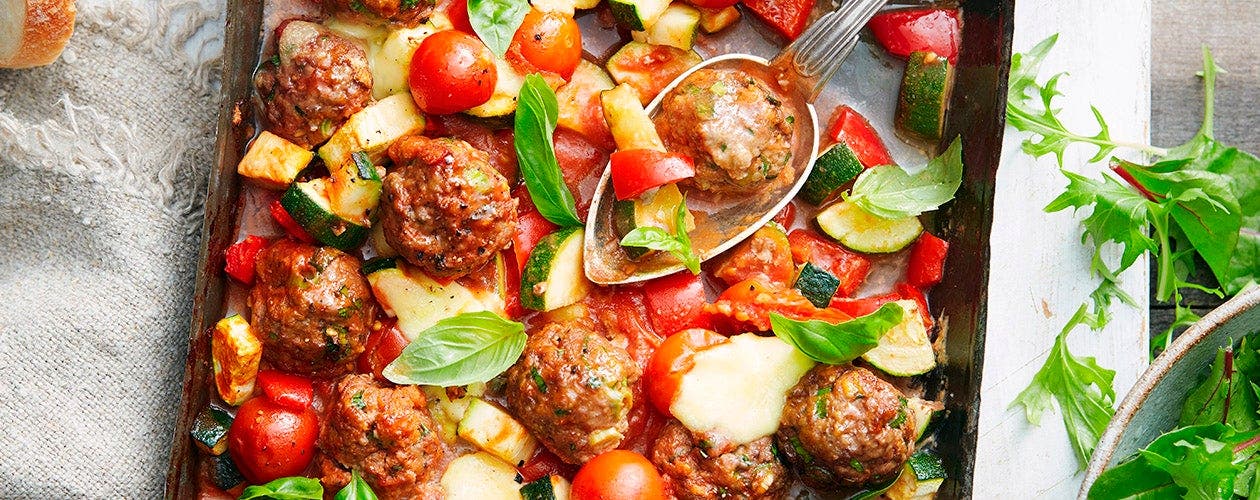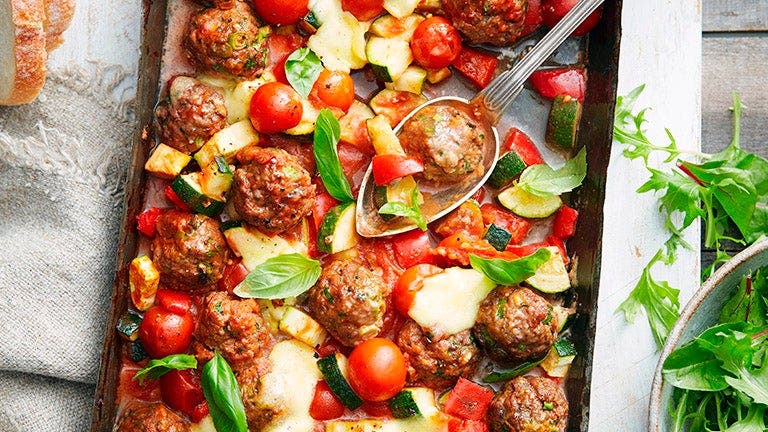High protein diet plan for weight loss


What is protein and why is it important?
Of all the nutrients we can choose, protein appears to have the greatest hunger-busting or appetite-satisfying effect. When you include a source of lean protein in a meal, not only are you likely to feel fuller for longer, but you’ll also ultimately make wiser food choices leading to more successful weight loss. Talk about protein power!
Points® are designed to help guide you towards nutritious food choices which are higher in protein and lower in sugar and saturated fat. Foods that are higher in sugar and/or saturated fat are given a higher Points value, while those that are higher in lean protein generally have a lower Points value.
How much protein should I eat?
As a rule of thumb, if you look up the protein content of a food in the per serve column of the nutrition information panel, 5g of protein equals a source and at least 10g of protein is a good source.
For an easy measure, one protein portion should be approximately the size of your palm.
How much protein you need depends on many variables, such as your weight, age and physical activity levels.
In the UK, adults are advised to eat 0.75g of protein for each kilogram they weigh, based on the Reference Nutrient Intake (RNI). So if you weigh 70kg (11 stone), you should eat about 52.5g of protein a day.
On average, men should eat 55g and women 45g of protein daily. That’s about 2 palm-sized portions of foods like meat, fish, tofu, nuts or pulses.
However, there may be higher individual recommendations for active people, athletes and those following a weight management programme. For weight maintenance it is recommended that 20 percent of your diet is protein, and for weight loss up to 25 percent.
Eating up to twice the current RNI for protein is generally thought to be safe.
Is protein good for weight loss?
Following a high protein diet plan can help you lose weight in a steady and sustainable way. Foods that are high in protein tend to keep you fuller for longer, which means you're less likely to overeat or reach for high-calorie snacks to keep you going between meals. A high protein diet can also help you build and maintain lean muscle mass, which means you'll burn more calories - even when you're resting!
Sample high protein diet plan
It’s important to spread your protein consumption throughout the day. Here's a snapshot of protein-based meals you can enjoy throughout the day on the WW weight-loss programme.
Breakfast
Set yourself up for the day with these tasty, filling ideas:
- Try a poached egg with spinach, tomatoes or mushrooms on wholegrain toast, a delicious start to the day which contains 5 grams of protein.
- Dollop higher protein content, strained, Greek yogurt on your fruit salad or cereal. One tablespoon of plain low-fat Greek yogurt has 2 grams of protein.
- Sprinkle unsalted nuts on your cereal or make you own granola. 30g raw almonds has 6 grams of protein.
Lunch
Having a serving of protein at lunch will help you manage the afternoon slump and get through until dinner.
- Toss a can of chickpeas into the blender with garlic, lemon juice and 2 tsp olive oil to make hummus for a wrap or crudités. 1 cup canned chickpeas has 9g of protein.
- Add a can of tuna in oil (drained) into a colourful salad. 1 can 95g tuna in oil has 20g of protein.
- Shred a BBQ chicken breast (skin removed) into an Asian slaw with fresh lime and coriander and roll up in lettuce cups. 1 medium 150g grilled chicken breast has 45g of protein.
Snacks
Opt for a protein snack when you get the munchies, or after a workout.
- Make your own sweet and savoury snack with chopped fresh dates and 30g of almonds which has 6 grams of protein.
- Spread natural peanut butter on celery sticks. 1 tbsp has 6 grams of protein.
- Munch on nuts or dried fava beans. 1 tbsp has 5 grams of protein.
Did you know?
High-quality protein helps promote muscle repair, recovery and regeneration after physical activity. There’s around an hour after a workout to pep up with protein to promote optimal recovery so you bounce back with less stiffness and soreness – ready to go again the next day. The perfect snack combo combines protein for repair, nutritious carbs for refuelling and fluids to rehydrate.
How to follow a high protein diet
Some people can find it difficult to eat enough protein, so you might need to put a bit of thought and preparation in to following a high protein diet plan. Start by working out your personalised protein needs, then make sure you're planning healthy, balanced meals and snacks. It might help to start writing in a food diary to keep you on track!
When you’re looking at protein content of a packaged food, you can easily check the nutritional information panel to get an exact count. But when it comes to fresh, whole foods, knowing the protein content is a bit trickier. Here’s a guide to help with some common portions of protein.
- 1 medium (150g) cooked chicken breast = 45g protein
- 1 small (125g) lean beef rump steak, grilled = 39g protein
- 100g cooked green lentils = 7g protein
- 100g plain soft or silken tofu = 8g protein
- 1 hard-boiled egg = 5g protein
- 1 slice (30g) extra light cheddar cheese = 9g protein
- 1 cup (250ml) skim milk = 9g protein
- 1 tub (150g) natural low-fat yoghurt =10g protein
- 10 roasted almonds = 2.4g protein
Key takeaways
Eating the right amount of protein for your individual needs is really important in terms of staying healthy, maintaining muscle mass and losing weight.
If you're struggling to follow a high protein diet, we can help! Our science-backed weight loss plans take the hard work out of calorie counting. Simply tell us about your lifestyle, goals and preferences, and we'll use our 57 years of weight loss expertise to create a personalised, easy-to-follow plan that will work for you.
